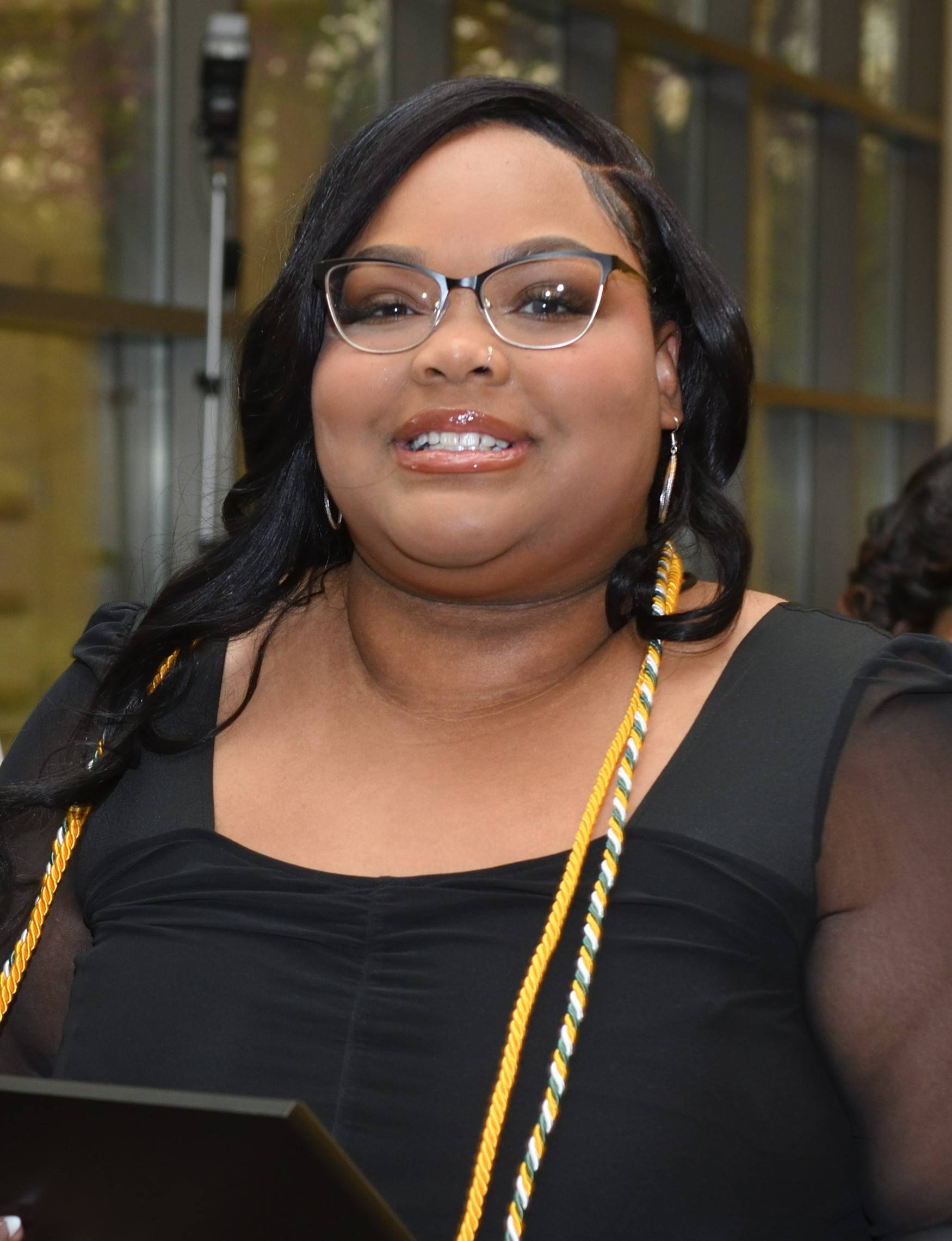Saniya Henderson
 |
Hometown: Detroit, MIMajor: Human BiologyClass Level: Senior (graduating)College(s): NatSci |
Saniya has been putting together her life story since she could remember. Being the fourth child of five children and the first girl, has taught her understanding and patience. She has also gained the special skill of reading and adapting to changing situations quickly after taking on the role of third parent to her siblings. Being able to look at a set of circumstances and slowly pick the situation apart gives her a distinctive outlook on the world and motivates her to continuously grow and overcome her challenges.
She is grateful for the trust that her parents bestowed upon her as she now feels like she can handle almost anything. It is also rewarding for her to know that her siblings look to her for support and guidance when they need help and reassurance. Being this type of support for her siblings has significantly influenced her decision to work with young Black girls to cultivate their sense of safety and belonging in the world of STEM.
While working in the Quintanilla lab in the Department of Entomology, she became familiar with Dr. Henry Chung’s research on the evolution of insect physiology. After speaking with Dr. Chung, she is even more convinced of her goal of attaining a Ph.D. while continuing her research in Dr. Chung’s lab.
Saniya’s reflections on her research experience:
“Working as an undergraduate research assistant has been something that has greatly impacted my life and has begun to help shape how I think about my future career. I started working in Dr. Marisol Quintanilla’s Applied Nematology laboratory at the start of my junior year. Over the year and a half that I have worked as an undergraduate researcher.
Along with learning many skills in the Quintanilla laboratory, I also conducted and led my own experiments. In the process of my research experience, I was fortunate to have a very supportive mentor, Elisabeth Darling, a Ph.D. student in the Quintanilla lab, to support me and develop my skills as a research assistant.
Having the support of my mentor has helped me become more optimistic and motivated in research. I am very grateful for her trust and leadership skills because without I would not have been able to decide to continue my research as a professional student. Many black and brown students do not get this opportunity to work in a research laboratory where people have your best interest at heart and provide you with many opportunities to make sure that you have everything you need for a better future.”
ROOT EXUDATES IMPACT ATTRACTION OF THE ROOT LESION NEMATODE, RATYLENCHUS PENETRANS, TO NONHOST PLANTS
Mentors: Elisabeth Darling, Ph.D. and Marisol Quintanilla-Tornel, Ph.D.
Pratylenchus penetrans is a root lesion nematode that feeds on healthy cells within carrot taproots. Pratylenchus penetrans has a wide host range so farmers have a hard time finding proper resistance (Collins, 2016). Cover crops can be a way for growers to lower populations during off season, and also provide other benefits to soil fertility. Cover crops should be non-hosts to root lesion to prevent population growth of the pest. In this study, we aim to determine how nematodes respond to oilseed radish root exudates. Determining if root lesion nematodes are attracted to, unreactive, or repulsed by oilseed radish root exudates can help us understand how these crops can be used for management. Previous research from the Applied Nematology Laboratory indicates that some varieties of oilseed radishes are poor or non-hosts to root lesion nematodes (Darling et al., pending). Investigating how nematodes respond to root exudates can help determine if plant-parasitic nematodes are initially attracted to nonhosts or repulsed by them. We examined four treatments, a positive control – Carrot, and three oilseed radish varieties Select, Concorde and Defender. The trial was conducted in a Petri dish, where 100 root lesion nematodes were inoculated on one side, and the root exudate was placed on the other. Six- and 24-hours post inoculation, the number of nematodes within each region was counted. Each treatment had five replicates and the trial was repeated twice.
Poster
Saniya shares what it means to be a Drew scholar:
“Being in the Charles Drew Scholars program as an alumni will allow me access to dozens of black and brown students in the STEM field who are working towards a graduate degree. As an alumni of this program. I have developed confidence and leadership skills while working with my peers to help them find experiences in their undergraduate journey.”
NSC Seminar Undergraduate Learning Assistant, Drew Scholars
Undergraduate Research Assistant, Applied Nematology Lab
Recipient, Spartan Volunteer Service Award
Recipient, Virtual Summer of Service Platinum Award
Recipient, Virtual Summer of Service Bronze Award
Saniya shares advice with peers and successors:
“Give back to the community who has supported you in your journey to success.”
Additional thoughts from Saniya:
“If young students are excited about science, it is important to keep them excited about science because the world is always looking for passionate individuals who can work through trial and error repeatedly. I want to be able to be a voice for black and brown students and be a revolving door to all students who would like to ask questions about furthering their career.”